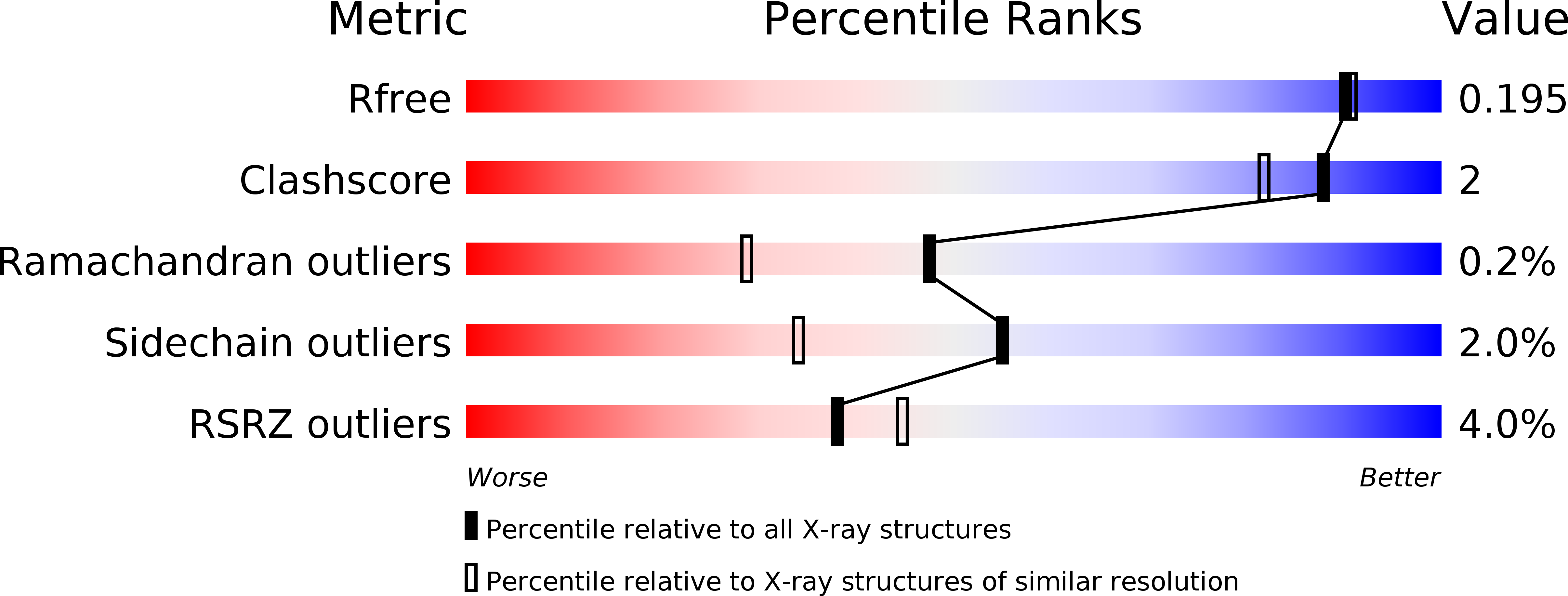Structural basis for acceptor-substrate recognition of UDP-glucose: anthocyanidin 3-O-glucosyltransferase from Clitoria ternatea
Hiromoto, T., Honjo, E., Noda, N., Tamada, T., Kazuma, K., Suzuki, M., Blaber, M., Kuroki, R.(2015) Protein Sci 24: 395-407
- PubMed: 25556637
- DOI: https://doi.org/10.1002/pro.2630
- Primary Citation of Related Structures:
4REL, 4REM, 4REN, 4WHM - PubMed Abstract:
UDP-glucose: anthocyanidin 3-O-glucosyltransferase (UGT78K6) from Clitoria ternatea catalyzes the transfer of glucose from UDP-glucose to anthocyanidins such as delphinidin. After the acylation of the 3-O-glucosyl residue, the 3'- and 5'-hydroxyl groups of the product are further glucosylated by a glucosyltransferase in the biosynthesis of ternatins, which are anthocyanin pigments. To understand the acceptor-recognition scheme of UGT78K6, the crystal structure of UGT78K6 and its complex forms with anthocyanidin delphinidin and petunidin, and flavonol kaempferol were determined to resolutions of 1.85 Å, 2.55 Å, 2.70 Å, and 1.75 Å, respectively. The enzyme recognition of unstable anthocyanidin aglycones was initially observed in this structural determination. The anthocyanidin- and flavonol-acceptor binding details are almost identical in each complex structure, although the glucosylation activities against each acceptor were significantly different. The 3-hydroxyl groups of the acceptor substrates were located at hydrogen-bonding distances to the Nε2 atom of the His17 catalytic residue, supporting a role for glucosyl transfer to the 3-hydroxyl groups of anthocyanidins and flavonols. However, the molecular orientations of these three acceptors are different from those of the known flavonoid glycosyltransferases, VvGT1 and UGT78G1. The acceptor substrates in UGT78K6 are reversely bound to its binding site by a 180° rotation about the O1-O3 axis of the flavonoid backbones observed in VvGT1 and UGT78G1; consequently, the 5- and 7-hydroxyl groups are protected from glucosylation. These substrate recognition schemes are useful to understand the unique reaction mechanism of UGT78K6 for the ternatin biosynthesis, and suggest the potential for controlled synthesis of natural pigments.
Organizational Affiliation:
Quantum Beam Science Center, Japan Atomic Energy Agency, 2-4 Shirakata-Shirane, Tokai, Ibaraki, 319-1195, Japan.

















